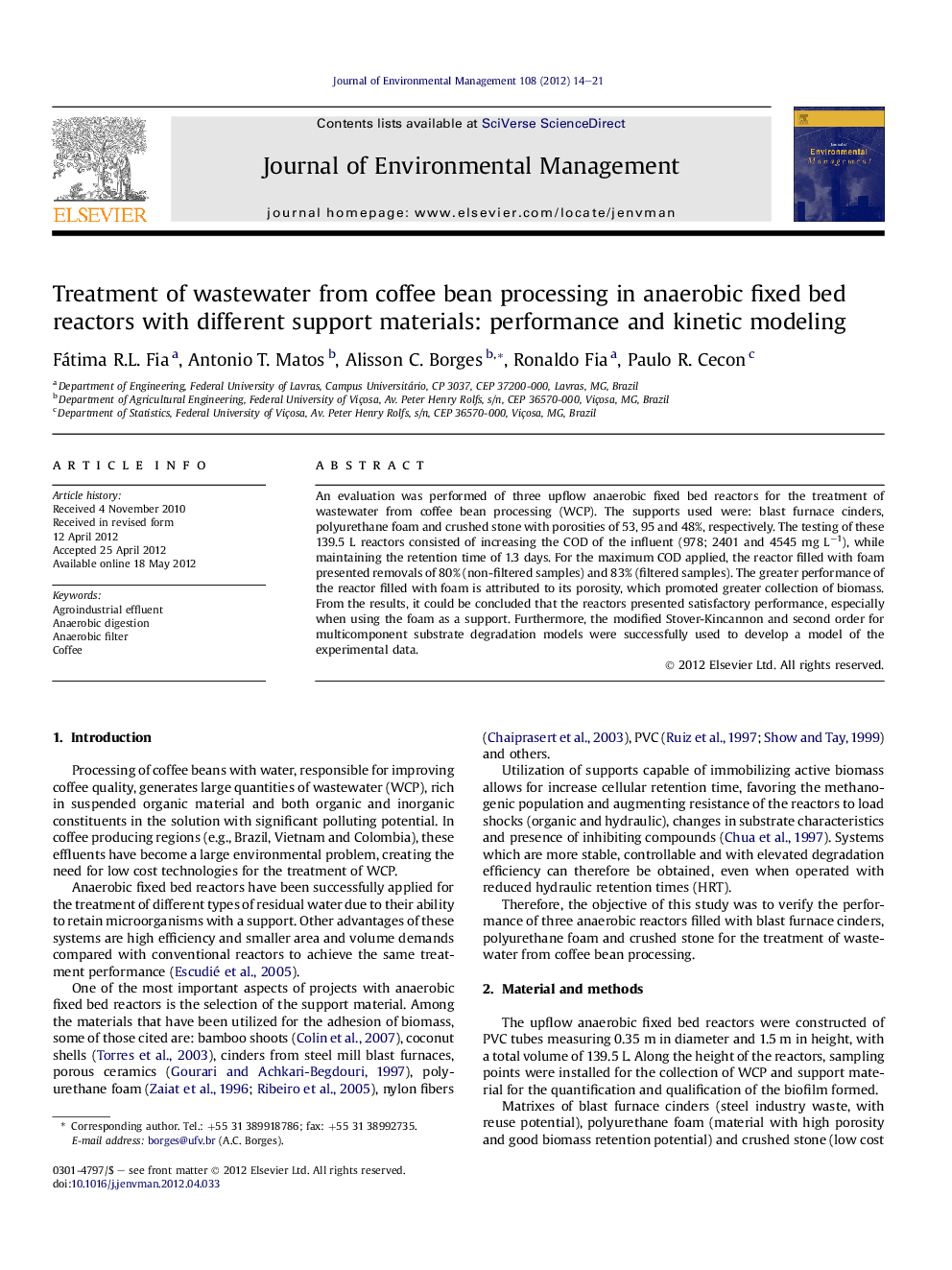| Article ID | Journal | Published Year | Pages | File Type |
|---|---|---|---|---|
| 1056764 | Journal of Environmental Management | 2012 | 8 Pages |
An evaluation was performed of three upflow anaerobic fixed bed reactors for the treatment of wastewater from coffee bean processing (WCP). The supports used were: blast furnace cinders, polyurethane foam and crushed stone with porosities of 53, 95 and 48%, respectively. The testing of these 139.5 L reactors consisted of increasing the COD of the influent (978; 2401 and 4545 mg L−1), while maintaining the retention time of 1.3 days. For the maximum COD applied, the reactor filled with foam presented removals of 80% (non-filtered samples) and 83% (filtered samples). The greater performance of the reactor filled with foam is attributed to its porosity, which promoted greater collection of biomass. From the results, it could be concluded that the reactors presented satisfactory performance, especially when using the foam as a support. Furthermore, the modified Stover-Kincannon and second order for multicomponent substrate degradation models were successfully used to develop a model of the experimental data.
► The characteristics of support material influenced the degradation of organic matter. ► Polyurethane support revealed a good performance for anaerobic reactor. ► The reactor presented an average efficiency of removal of 80% (non-filtered samples). ► Two models were appropriate to describe the kinetic behavior of the anaerobic fixed bed reactor.
